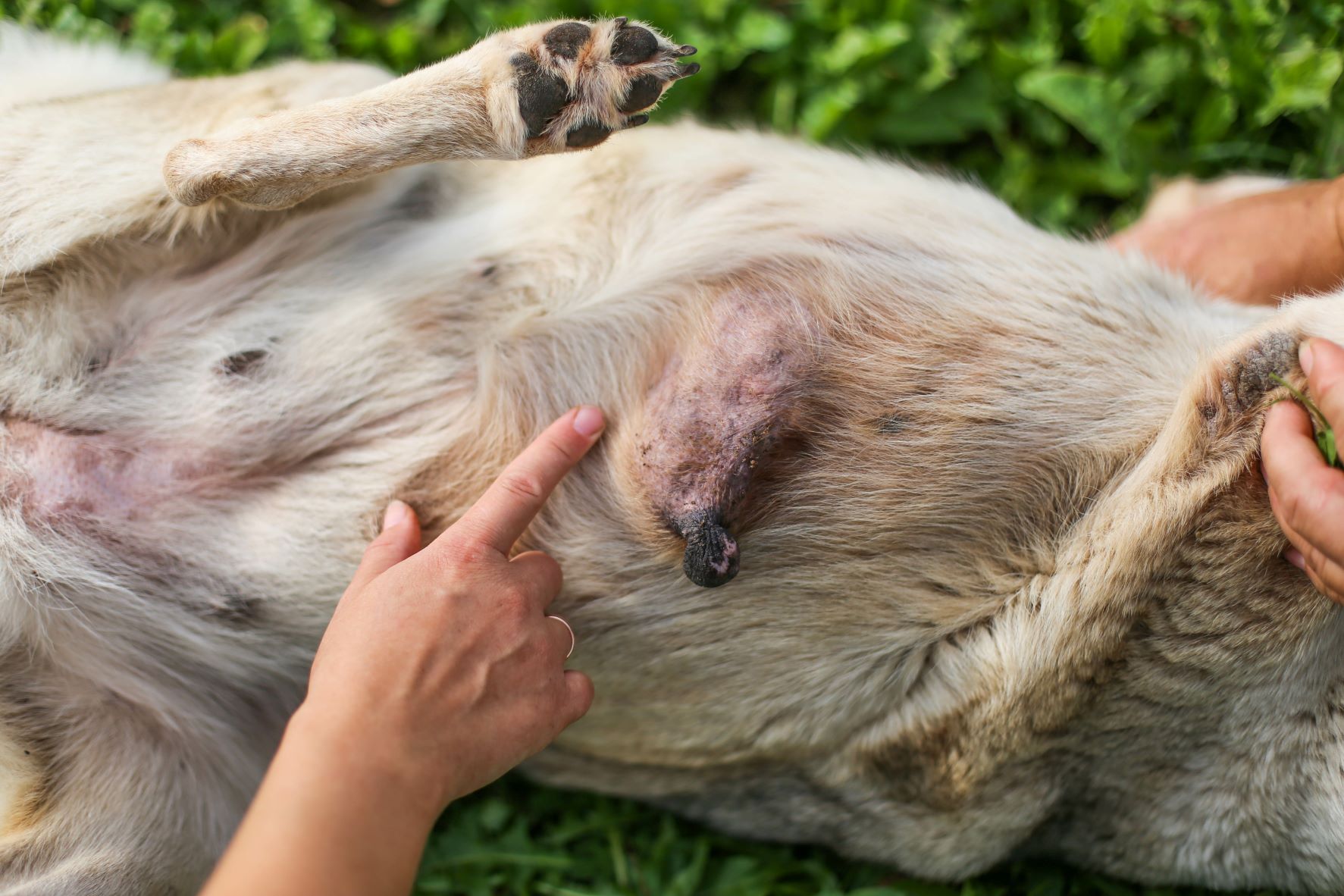Mammary gland tumor:
- A mammary tumor is a new plasma originated in mammary gland
- It is a common finding in older female dogs and cats that are not spayed but they are found in other animals as well .

Etiology:
- Dogs are susceptible to a wild variety of mammary gland neoplasm, most of which are influenced by circulating reproductive steroidal hormone
- example:
Progesterone increases the risk for developing mammary cancers in dog
⬇
Progesterone stimulate growth factor (molecules that stimulate specific processes in body)
⬇
That causes mammary cells to multiply
Clinical signs:
- Single nodules are found in approximately 75% of cases of canine mammary tumors
- Nodules or palpable masses can be found in glandular tissue or associated with the nipple
- Masses in two caudal glands (4th and 5th) account for a majority of tumors
- Benign tumors tends to be small , well circumscribed and firm, whereas malignant tumor are larger and invasive and coalesce with adjacent tissue
- Occasionally, the skin over masses may ulcerate and bleed and effected area may feel warm to touch and become painful
- Mammary gland may even develop a discharge

Pathogenesis:
- Mammary tumor of dog develop under the influence of hormone
- Receptors for both estrogen and progesterone can be found in 60-70% of tumors
- The risk of developing mammary tumor increased greatly after 1ST and 2nd estrus cycle
- Dogs spayed prior to first estrus have risk 0.8% and after 1st and 2nd estrus risk will be 8% and 26% respectively.
- Malignant mammary tumors typically spread through the lymphatic vessels.
- Metastasis from 1st, 2nd and 3rd mammary glands is to the ipsilateral axillary or anterior sternal LN.
- 4th and 5th mammary glands drain to superficial inguinal LN where metastasis can be found.
- Many mammary carcinomas will eventually metastasize to lungs
- In dogs, mammary tumor are 2nd most common tumors (after skin tumor)
- And most common in females.
- 3rd most common in cats following lymphoid and skin cancer.
Classification of mammary carcinomas depending on biological behavior ,
- Taking into consideration the histological aspects
- Stage 0:
Malignant proliferation is limited to the anatomical structure of mammary ducts, carcinomas in situ
- Stage 1:
malignant proliferation extend beyond anatomical limits of mammary duct, invading adjacent stroma, invasive carcinoma, with vascular and lymph node identification
- Stage 2: carcinoma with vascular or lymphatic invasion or metastasis in regional lymph node
- Stage 3: obvious metastatic disease
Pathological findings
- Based on histological classification of mammary gland tumor:
- Approximately half are benign(fibroadenomas, simple adenomas and benign mesenchymal tumor)
- Half are malignant(solid carcinomas, tubular adenocarcinomas, papillary adenocarcinomas, anaplastic carcinomas, sarcomas and carcinosarcomas)
